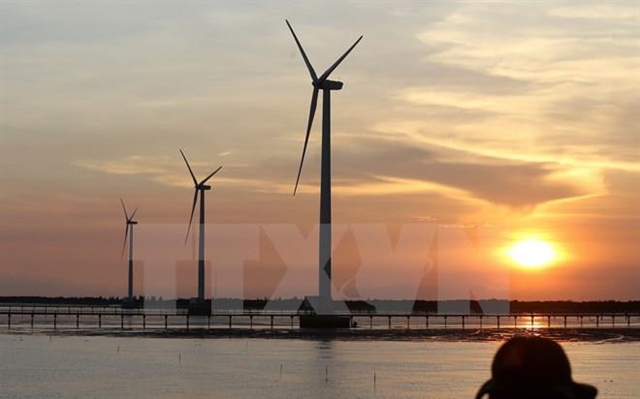 Society
Society


|
| A wind power farm in the Mekong Delta's Bạc Liêu Province. —VNA/VNS Photo |
HÀ NỘI — The United States Agency for International Development (USAID)-sponsored Việt Nam Low Emission Energy Programme (V-LEEP) helped raise US$311 million from six private sector-led projects to generate 300MW of wind and solar power, a source of sustainable renewable energy, for Việt Nam.
Over the last three years, these renewable energy projects, along with savings from energy efficiency improvements, have reduced about 730,000 tons of greenhouse gas emissions, or the equivalent of 365,482,807kg of coal.
The information was released at a ceremony on Thursday marking the completion of the five-year V-LEEP.
Speaking at the event, US Chargé d’Affaires Christopher Klein said that the growth of solar power in Việt Nam over the last two years is inspiring, and Việt Nam now stands as a leader in renewable energy across Southeast Asia.
"The private sector has driven much of this growth in solar development, highlighting the strong support from the Government of Việt Nam for private sector-led development," he added.
V-LEEP also collaborated with the Ministry of Industry and Trade (MOIT) to provide technical support for Việt Nam’s future power grid and the development of the Eighth Power Development Plan, which was recently published on MOIT’s website for public comment.
The programme also helped formulate a Direct Power Purchasing Agreement pilot programme which, after final approval, will enable private enterprises to partner with Việt Nam to provide capital for new solar and wind development projects, and increase Việt Nam’s contribution to helping the environment.
USAID will maintain the momentum of V-LEEP and deepen its collaboration with MOIT through its new programme, V-LEEP II.
Over the next five years, USAID V-LEEP II will support Việt Nam as it continues its transition to a clean, secure, and market-based energy sector by increasing the deployment of advanced energy systems, improving energy sector performance, and increasing competition in the energy sector. — VNS




